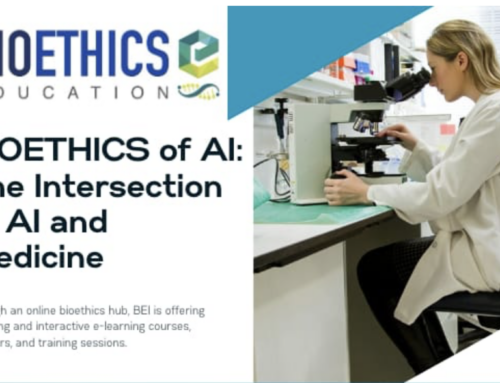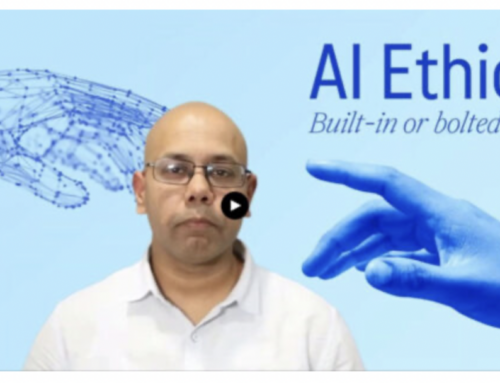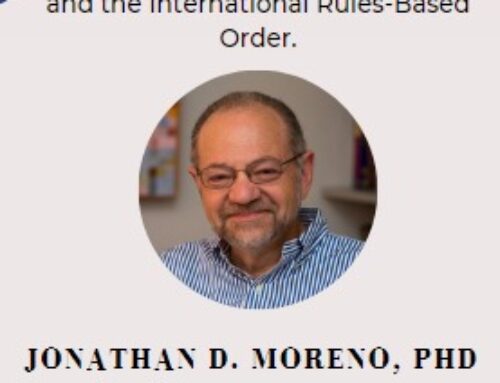by Michael S. Dauber, MA, GBI Visiting Scholar
Stem cell research holds significant promise in finding cures for diseases that have traditionally devastated the human body. Earlier this year, Global Bioethics Initiative reviewed Robin L Smith, M.D., and Max Gomez, Ph.D.’s new book Cells Are The New Cure: The Cutting-Edge Breakthroughs That Are Transforming Our Health, which detailed many of the significant advancements that have come in stem cell research in recent decades. Now, the advent of CRISPR gene editing puts effective therapies even closer to the horizon of therapeutic advancement.
Unfortunately, however, it can be very difficult to discern whether or not a clinic is offering a real, effective, verified therapy or, as Sarah Bosley of The Guardian calls it, “selling hopes.” According to her story in The Guardian, a recent study published in The Lancet suggested that the prevalence of unsubstantiated stem cell therapies poses a serious threat to the development and credibility of the field as a whole. Not only do some doctors offer cures with questionable scientific validity, but oversight institutions are sometimes even complicit in the act.
For one notable example, the authors of the study refer to the high profile case of Paolo Macchiarini, the Italian surgeon who implanted artificial trachea created using stem cells in multiple patients before it was discovered that the trachea were not as effective as he had claimed. In fact, many of his patients later died as a result of complications from his “cures.” Perhaps most disturbing about the case was the fact that those who hired him and overlooked several red flags from other clinicians in hiring him, and he had not registered with an institutional review board or other regulatory body.
The Lancet study and The Guardian story also recount the tale of David Vannoni, a scientifically and medically untrained individual who offered faulty stem cell therapies through the Stamina Foundation. Although he was convicted of fraud and conspiracy, and agreed not to offer the therapies again as part of a plea bargain to get a suspended sentence, Alison Abbot reports in Nature that he is once again offering stem cell therapies in eastern Europe.
Intuitively, it makes sense that many people may be taken in by the promise of new and difficult-to-believe stem cell therapies, even if they seem like a long shot. As Andrea Ziccheiri, one of Vannoni’s patients reports in the Nature story, “Even if there was only 1% chance of hope, I wanted to take that chance.” His attitude is typical of many patients in dire medical conditions: as proven therapies are exhausted, individuals are willing to accept more drastic, experimental therapies, and are willing to cling to any hint of hope, even if it seems too good to be true or shows a questionable amount of evidence.
The authors of the Lancet report suggest four ways we can improve our medical infrastructure and cultural awareness to reduce the frequency of such cases: they call for “better science, better funding models, better governance, and better public and patient engagement.” Generally speaking, on the patient side the authors recommend checking to see if the research has been published in peer reviewed journals, what kind of cells are being used, and if there have been any records of successful patient follow-ups.
Governance of stem cell research is a much more complicated affair: how do we regulate research and provide oversight in such a way that we do not impede or discourage genuine scientific development? The authors of the Lancet study point to one notable, if flawed, example. The Food and Drug Administration (FDA) requires all researchers engaged in clinical trials that receive funding from the National Institutes of Health (NIH) to register their trial on ClinicalTrials.gov as a means of transparency and regulatory oversight. Although registration is not legally required for studies that lack NIH funding, many high profile scientific journals (for example, members of the International Committee of Medical Journal Editors, or (ICMJE) and private institutions also require registration on the site. Failure to comply with government registration requirements can result in fines up to $10,000 per day, termination of funding, and ineligibility to publish.
While these penalties do a reasonable job of regulating research, there are always instances where investigators and interventions slip through the institutional cracks, producing abuses and figures like Macchiarini and Vannoni, among others. Further, there are no universal regulatory bodies or guidelines with which all countries must comply. Would we be able to more successfully prevent the proliferation of faulty therapies more effectively if there were some international regulatory body and code overseeing research? Would such a system be possible? Do certain therapies that hold significant promise for both harm and reward automatically require more scrutiny than other areas of research?
While the prospect of forming an international institutional review board might seem daunting, it may not be impossible. One way might be to expand an apparatus already in place: perhaps such a commission might be overseen by the United Nations through the World Health Organization (WHO). Member nations could each establish their own “chapter” agency, and employ reviewers beholden to some sort of established international research code of ethics. While no such binding law currently exists, many individual laws do: the United States uses The Common Rule, and many international entities have adopted provisions from The Belmont Report, The Declaration of Helsinki, and The Nuremburg Code, all of which converge on common core ethical principles.
Key to the success of such an effort would be some way of verifying the experiments, perhaps by sending investigators to audit a certain percentage of research studies in each country. This would go a long way toward evaluating which clinics and doctors were engaged in genuine, verifiable science and which were not. In a somewhat related example, such external evaluators would prevent problematic cases like that of Dr. Sergio Cannavero, who claims to have performed successful head transplants on multiple animals, such as monkeys, but has not disclosed a sufficient amount of evidence (if he can truly be said to have disclosed evidence at all: the evidence mainly consists of photographs and anecdotal reports in interviews). If his work had been conducted under the promise of direct observation, it is likely that he would have been stopped long before he initiated plans to perform the procedure alongside Dr. Xiaoping Ren on a human patient.
The tricky part, as with any instance of wide international cooperation, would be to get all of the member nations to agree to oversight, a historically difficult task. However, as our scientific and medicinal community faces increased globalization and technology continues to advance enough to enable smaller, independent medical and research practices to test and offer new therapies, further, more consistent oversight is needed to adequately protect patients.
___________________________________
Michael S. Dauber is a bioethicist with an MA in Bioethics from NYU. He is a Visiting Scholar with Global Bioethics Initiative and has served as a medical ethicist and works as an IRB Coordinator. For questions, feel free to email him at mdauberbioethics@gmail.com.








Leave A Comment